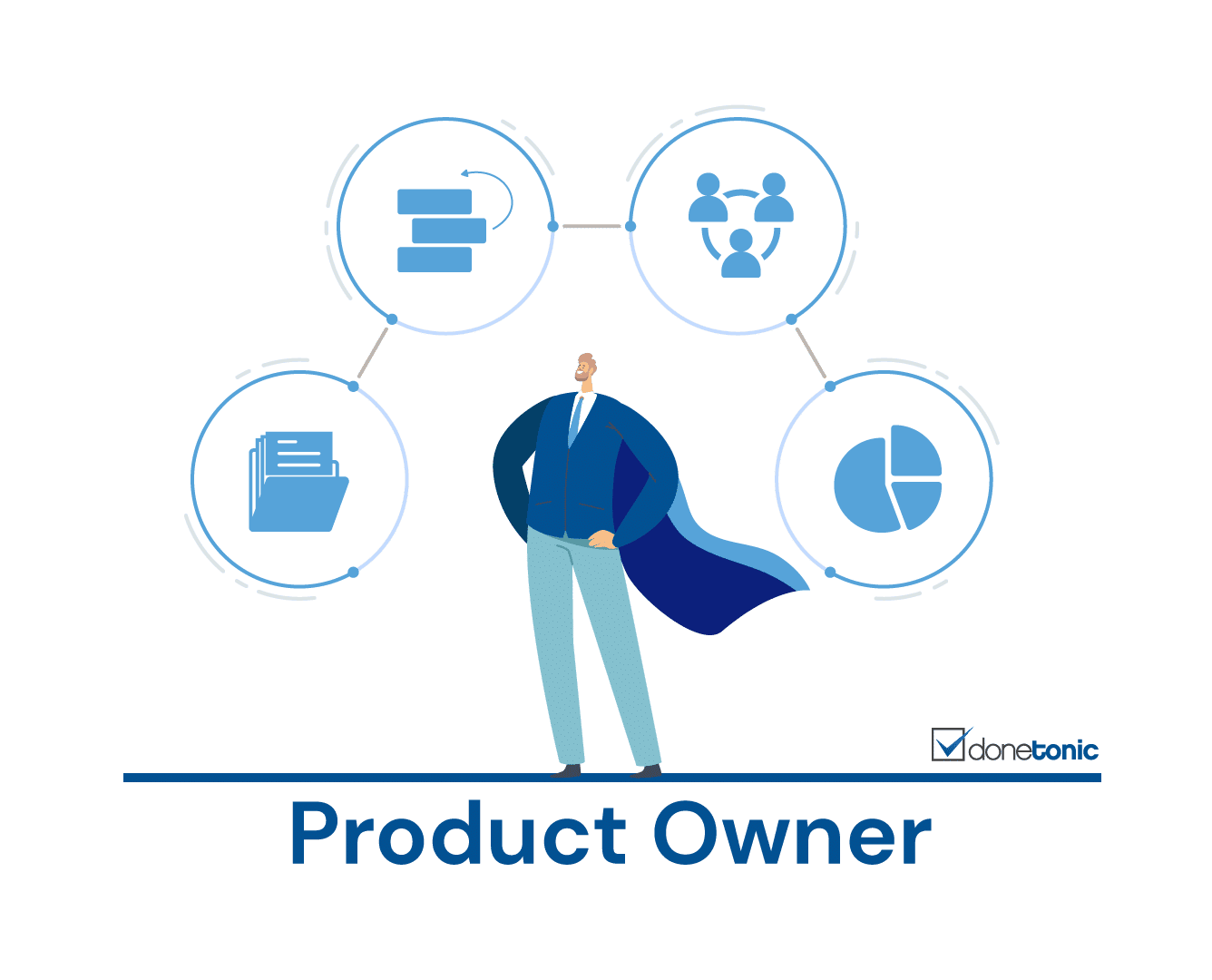Introduction: Within the Scrum framework, the product owner occupies a central position, tasked with steering product development towards success by championing stakeholder interests, shaping the product vision, and orchestrating the team’s efforts. This comprehensive examination delves into the multifaceted dimensions of the product owner role within the context of the Scrum Guide, elucidating their critical responsibilities and the formidable challenges they encounter in Agile software development.
Key Responsibilities of the Product Owner (Aligned with the Scrum Guide):
- Visionary Leadership: The product owner serves as the chief architect of the product vision, sculpting a roadmap that aligns with organizational objectives and resonates with end-user needs. Drawing upon market research, customer feedback, and strategic insights, they craft a compelling narrative that inspires and galvanizes the development team, fostering a collective sense of purpose and direction.
- Stakeholder Engagement: Effective stakeholder engagement lies at the core of the product owner’s mandate. They function as the conduit between the development team and stakeholders, nurturing relationships, managing expectations, and soliciting feedback with finesse and diplomacy. By cultivating a collaborative dialogue, they ensure that the product remains a manifestation of stakeholder aspirations and business imperatives, fostering a climate of trust and synergy.
- Backlog Management: The product backlog stands as the crucible of Agile development, housing a curated repository of user stories, features, and enhancements essential for realizing the product vision. As the custodian of the backlog, the product owner meticulously curates, refines, and prioritizes backlog items, wielding a discerning eye honed by market acumen and user empathy. They collaborate fervently with stakeholders and the development team, distilling complex requirements into actionable insights that guide the iterative development process.
- Decision-Making Authority: Empowered by the tenets of the Scrum framework, the product owner assumes the mantle of decision-making authority, wielding their expertise and judgment to steer the product towards fruition. They navigate a labyrinth of choices, spanning feature prioritization, release cadence, and scope management, with a keen eye for maximizing value and minimizing risk. Armed with a potent blend of domain knowledge and strategic foresight, they orchestrate the development team’s efforts with clarity and conviction, propelling them towards the pinnacle of product excellence.
- Continuous Improvement: Agile development is synonymous with relentless evolution and refinement, and the product owner serves as its vanguard. They foster a culture of introspection and innovation, catalyzing a virtuous cycle of feedback, experimentation, and adaptation. Through a tapestry of retrospectives, stakeholder consultations, and market analyses, they glean invaluable insights that inform strategic pivots and tactical adjustments, ensuring that the product remains resilient and responsive to the dynamic currents of the marketplace.
Challenges Faced by Product Owners:
In their noble quest to shepherd the product towards greatness, product owners grapple with an array of formidable challenges, including but not limited to:
- Balancing Stakeholder Priorities: Juggling the diverse and often conflicting priorities of stakeholders is a Herculean task that demands finesse and diplomacy. Product owners must navigate a labyrinth of demands, delicately balancing the aspirations of various stakeholders while safeguarding the integrity of the product vision.
- Navigating Uncertainty and Ambiguity: In the turbulent seas of Agile development, uncertainty and ambiguity abound, posing formidable obstacles to progress. Product owners must navigate these treacherous waters with poise and pragmatism, embracing change as an opportunity for growth and innovation rather than a harbinger of chaos and disruption.
- Building Consensus and Alignment: Achieving consensus and alignment among stakeholders is akin to navigating a minefield, fraught with pitfalls and perils. Product owners must wield their powers of persuasion and negotiation deftly, forging alliances and bridging divides to ensure that the product remains a harmonious reflection of stakeholder aspirations and organizational imperatives.
- Managing Complexity: The landscape of modern product development is replete with complexities, ranging from technical intricacies to organizational dynamics. Product owners must navigate this labyrinth of complexity with aplomb, orchestrating cross-functional collaboration, resolving dependencies, and mitigating risks to ensure the smooth progression of the development process.
- Embracing Change: In the crucible of Agile development, change is the only constant, demanding adaptability and resilience from product owners. They must embrace change as an intrinsic facet of the development process, pivoting deftly in response to evolving requirements, market dynamics, and user feedback, lest they risk being swept away by the relentless tide of progress.
Conclusion: In conclusion, the product owner occupies a hallowed position within the Scrum framework, embodying the principles of leadership, collaboration, and customer-centricity with unwavering resolve. Through visionary leadership, stakeholder engagement, backlog management, decision-making authority, and continuous improvement, they navigate the labyrinthine corridors of Agile development with grace and fortitude, steering the product towards the zenith of excellence. Despite the formidable challenges they face, product owners stand as stalwart guardians of product success, guiding organizations towards innovation, growth, and customer satisfaction in an ever-evolving landscape.
